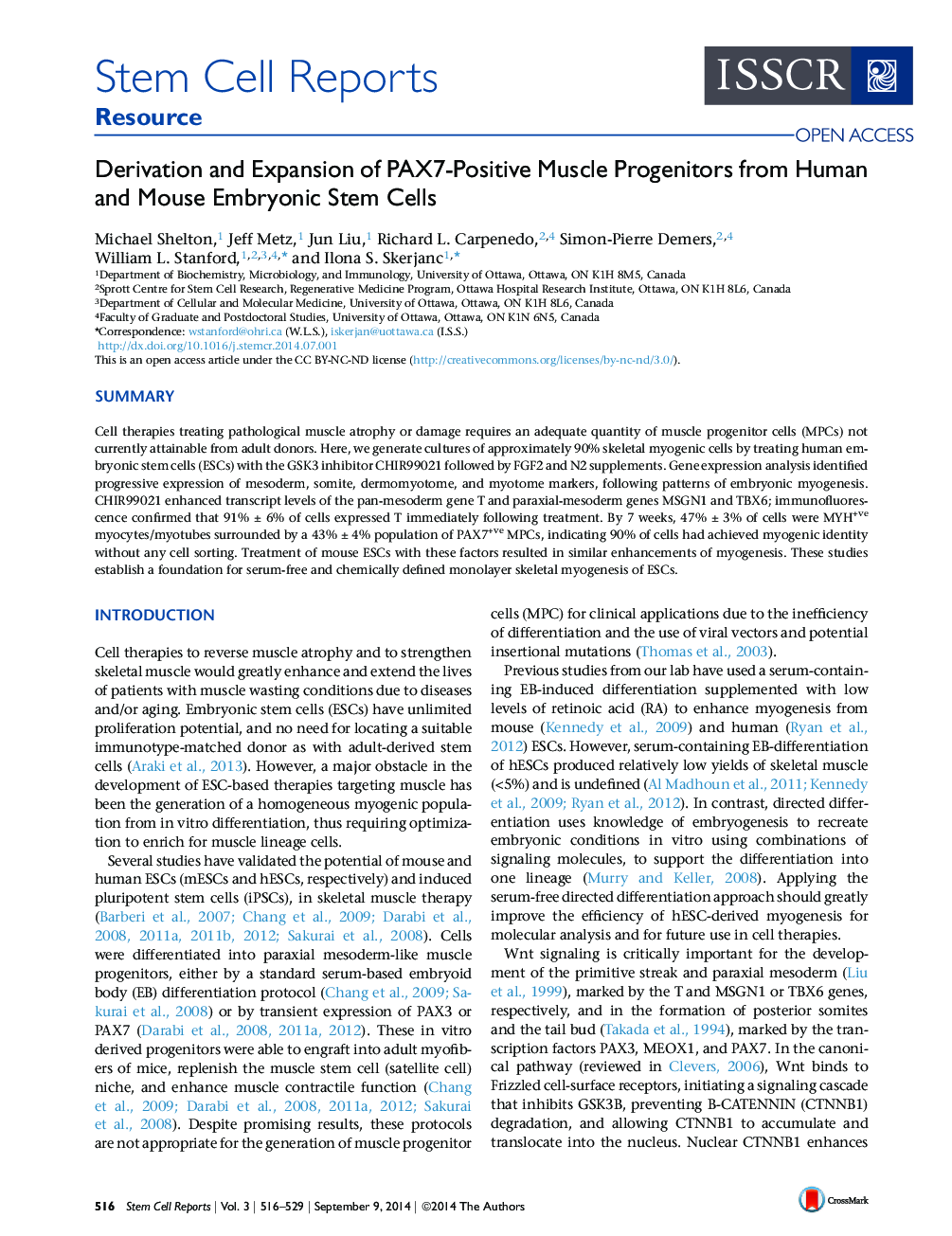| Article ID | Journal | Published Year | Pages | File Type |
|---|---|---|---|---|
| 2093352 | Stem Cell Reports | 2014 | 14 Pages |
•CHIR99021 treatment induces 90% of hESCs into mesoderm in vitro without FACS•43% and 47% of treated hESCs become PAX7+ve MPCs and skeletal myocytes, respectively•CHIR99021/FGF2/N2-derived myotubes twitch and contract in vitro•Treatment of mESCs similarly enhances skeletal myogenesis
SummaryCell therapies treating pathological muscle atrophy or damage requires an adequate quantity of muscle progenitor cells (MPCs) not currently attainable from adult donors. Here, we generate cultures of approximately 90% skeletal myogenic cells by treating human embryonic stem cells (ESCs) with the GSK3 inhibitor CHIR99021 followed by FGF2 and N2 supplements. Gene expression analysis identified progressive expression of mesoderm, somite, dermomyotome, and myotome markers, following patterns of embryonic myogenesis. CHIR99021 enhanced transcript levels of the pan-mesoderm gene T and paraxial-mesoderm genes MSGN1 and TBX6; immunofluorescence confirmed that 91% ± 6% of cells expressed T immediately following treatment. By 7 weeks, 47% ± 3% of cells were MYH+ve myocytes/myotubes surrounded by a 43% ± 4% population of PAX7+ve MPCs, indicating 90% of cells had achieved myogenic identity without any cell sorting. Treatment of mouse ESCs with these factors resulted in similar enhancements of myogenesis. These studies establish a foundation for serum-free and chemically defined monolayer skeletal myogenesis of ESCs.
